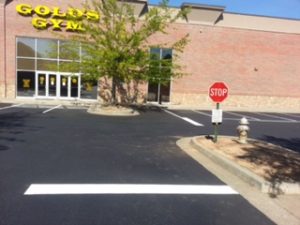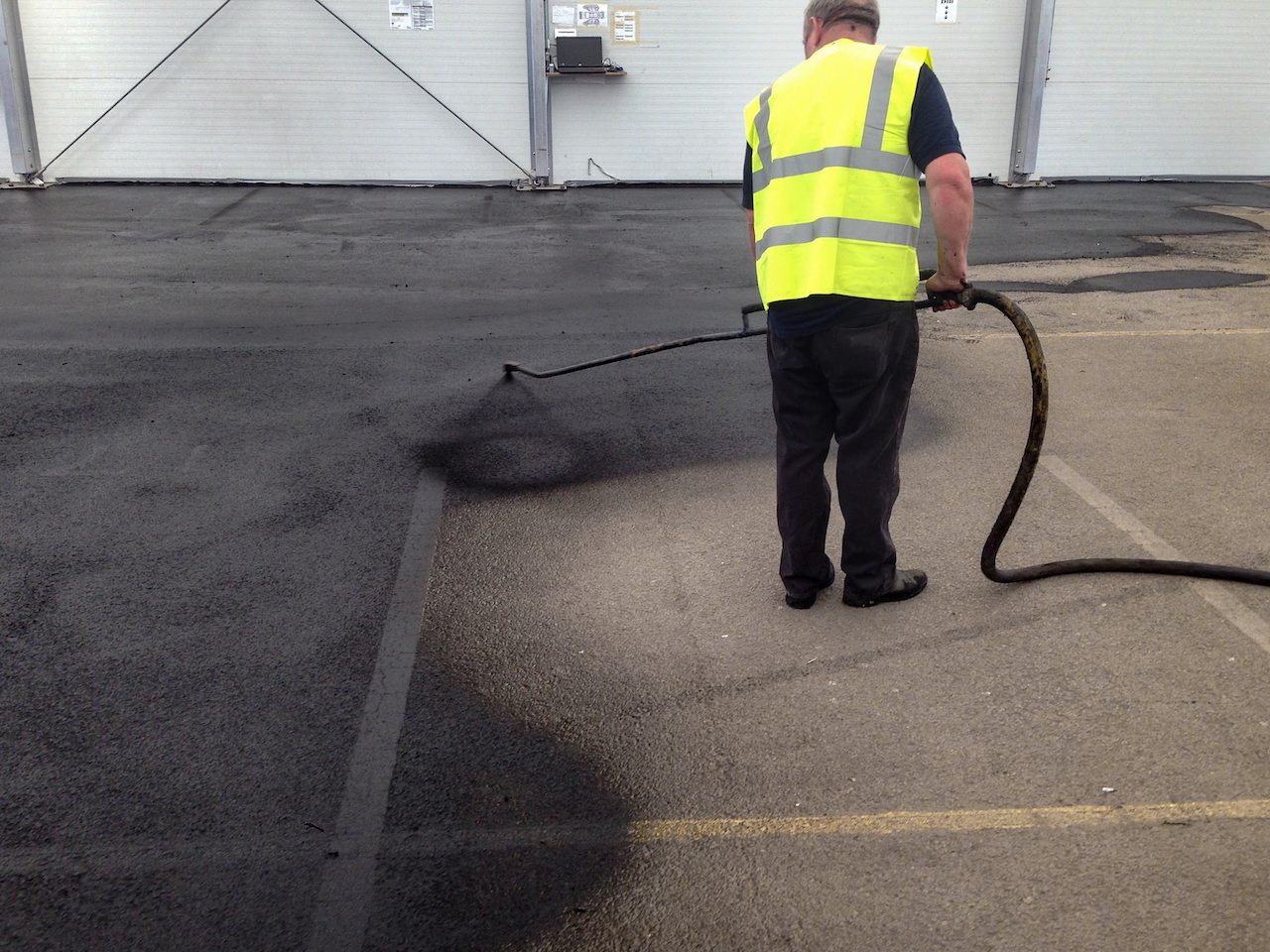
Sealcoating in the Fall | The Importance of Weather
Sealcoating is applied as a liquid, so the water that it contains must evaporate if the sealant is to cure and form a hard shell. The rate of evaporation is heavily influenced by the temperature of the air, the humidity level, the temperature of the ground and the wind velocity. Evaporation rates increase as temperatures increase, decrease as humidity increases and increase if there is a bit of a breeze. In addition, sealcoating needs to be exposed to sufficient sunlight if it is to cure properly.
Sealcoating in the Fall | Atlanta, GA | Acceptable Weather Conditions
Sealant manufacturers state both ideal and acceptable conditions for the application of their products. Ideal conditions include humidity levels of less than 50 percent, wind velocity of at least 4 mph and temperatures of 70 degrees Fahrenheit. In North Georgia, all ideal conditions are seldom present on the same day; humidity levels seldom drop below 60 percent, winds can vary substantially within a matter of hours and the temperature is often significantly warmer or cooler than the ideal.
Fortunately, however, conditions frequently fall within the acceptable ranges. The most critical of the acceptable conditions are the air temperature and the ground temperature. These need to be at least 50 degrees Fahrenheit, and they cannot drop below 50 degrees for at least 24 hours after the sealant is applied. Sealant should not be applied if the humidity is extremely high, and it is not advisable to apply sealant on an overcast day. Except for an occasional gust, wind velocity should not exceed approximately 10 mph. Since rain can ruin wet sealcoating, there should be no precipitation expected for the first 24 to 48 hours after application.
It is important to remember that the weather in North Georgia can be quite variable, making long-range forecasts difficult. Therefore, a contractor might be forced to reschedule your job if the forecast changes substantially. If the changes are relatively minor — but significant enough to make conditions marginal — the contractor may be able to compensate by including one or more additives in the sealant mix. Your best bet is to hire a reliable, experienced contractor and trust his judgment on whether it is advisable to apply sealcoating. In some cases, he may recommend that you focus on repairing cracks and potholes in the fall and postpone sealcoating until the spring.
Count on MH Greeson for Your Asphalt Services
MH Greeson Paving provides asphalt services in Atlanta, Marietta, and throughout North Georgia with quality services at affordable prices. We are dedicated to delivering true value, personal attention and superior customer service to every customer. Our services include sealcoating, crack repair, parking lot striping, asphalt paving, pavement marking and asphalt repair. We also install bollards, car stops and traffic signs. If you would like to request a free quote, complete the online form or call (770) 335-2983.




